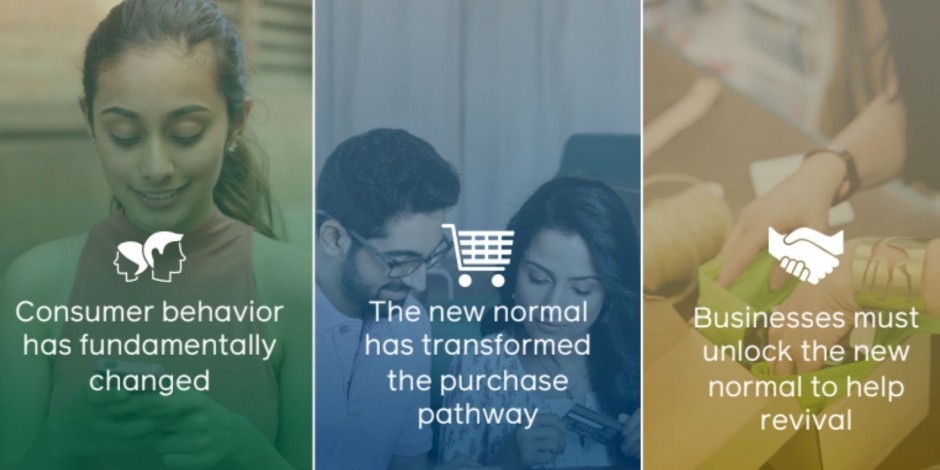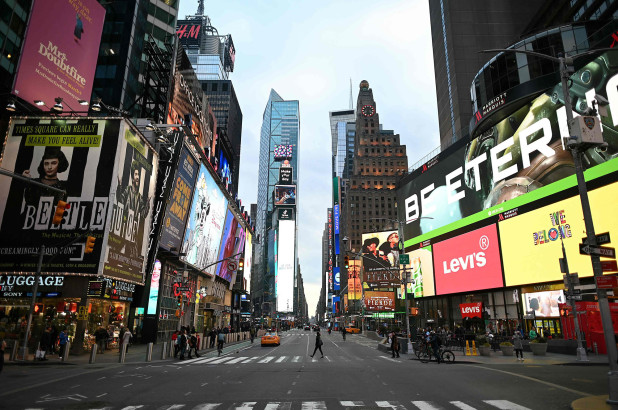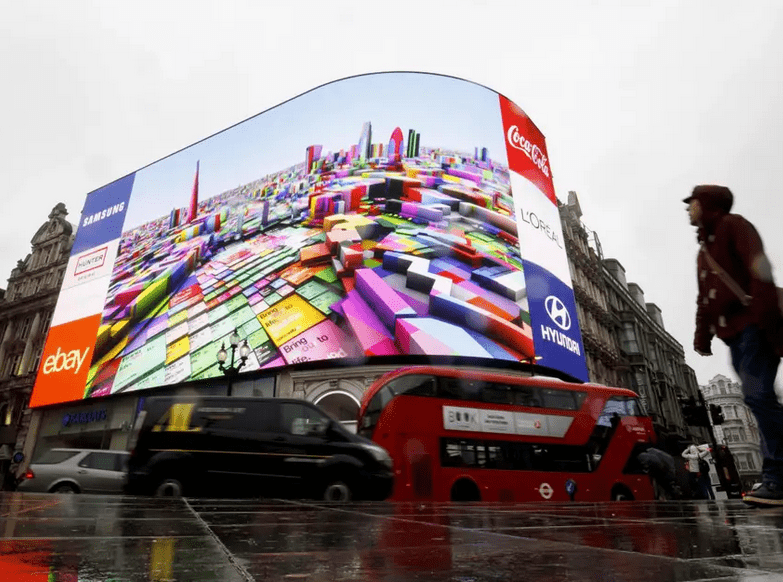By The Drum Reporters
From The Trade Desk to Condé Nast and Puma to PepsiCo, we ask some of the world’s best digital marketers where they think the next big industry shift will come from?
Nigel Vaz, global chief executive officer, Publicis Sapient
If you’re riding (or getting hit by) waves then you’re probably still swimming in the shallows. By which I mean it would be easy to answer that the next big wave is the ability to reach new possibilities in personalization at scale, across touchpoints, through data and machine learning. It’s true, but tells only part of the story. What we are all here to do is not to help clients create a deliverable, but a way to operate and exist so they don’t end up on the receiving end of another company’s disruptive breakthrough. The most compelling conversations I have are with business leaders who aren’t looking for waves, but horizons: people such as Novartis chief executive Vas Narasimhan, whose vision is to move beyond being a pharmaceutical company and to create value for patients and support them through their entire lifecycle. That’s an incredibly powerful and purposeful ambition that requires reimagining that business on a number of fronts, from strategy to experience to the application of data.
Oliver Deane, director of commercial digital, Global
Voice will start to have a huge impact on our daily lives. We will begin to do much more than ask Alexa to play the radio. As we embrace voice to be more productive, we will use our devices to order groceries while we make dinner, have a long-form feature read to us while we exercise and book our train travel while shopping. Much of this technology is already accessible – the wave of disruption in the coming years will be how much voice is used and how regular it becomes within our lives.
Ray Soto, director of emerging tech, Gannett
The digital signs of the next big wave are all around us, but you can’t focus on one without considering the others. I foresee the next big wave will be a convergence of several technologies that solves a problem and delivers an experience worth being a part of. I see it as something that helps us navigate our digital space differently, but provides a more immersive experience and efficiency without a lack of connection we may feel today.
Adam Harris, director of custom solutions, Twitch
I believe live sport is surfing the first wave of digital disruption. Sports often look to expand their reach into different audiences or look for different ways to communicate with existing fans. On top of that you have a host of traditional sports, such as golf and Formula 1, with aging fan bases, contrasted with the eSports scene, which is thriving among younger demographics – just look at the success of the recent Fortnite World Cup.
With eSports’ success as a purely digital-first experience, traditional sports have a huge opportunity. Interactive live environments such as Twitch are made for the kind of communal, passionate tribal experiences live sport delivers. We are already seeing strong engagement in this area with the likes of the NFL, Champions and Europa Leagues, MLS, Rugby League and National Women’s Hockey League all broadcasting live on Twitch.
Luke Davies, senior manager of global yield, Reuters
Data privacy law, again. GDPR is a slow burner and unfortunately our industry’s attempts of adoption have reduced the general user experience quality across the web. For GDPR, and now CCPA in 2020, with the potential for wider uptake across the US market, we can expect to experience changing tides across the next few years.
Simon Gresham Jones, chief digital officer, Condé Nast
On our mobile devices, again. 5G will open up a new frontier of business and creative possibilities for brands. For media and entertainment in particular, there’s an opportunity to re-imagine how we inspire our audiences at scale.
Morten Grubak, executive creative director for northern Europe, Virtue
The intellectual properties of brands. Brands need to be innovative in the products, services and solutions they bring to the world (this is where adding value really gets to live), not just in their communication.
Creative agencies should have as much contact with product development and innovation, not just marketing. We need to prove our value by solving real problems – and not just that, but doing it in surprising and interesting ways to capture the world’s increasingly scarce attention. It’s harder than it sounds. But don’t fret: the world is young.
Alexandra Willis, head of communications, content and digital, AELTC
A continuation of the ability of AI, machine learning and automation to drive personalization: it will just get better and more sophisticated and therefore true choice for the consumer over experience, rather than just customization within rules.
Voice: not being wedded to keyboards will rapidly increase the speed at which things are expected to happen, both in terms of the way we work and how consumers engage.
5G penetration: if it does what it says, it could transform the cost and flexibility of content production in such a way that we move completely away from linear and digital, and have a truly integrated model.
Alysia Borsa, chief marketing and data officer, Meredith
It’s hard to pick just one thing. From a consumer perspective, behaviors continue to evolve and expand to multiple platforms, with voice being a major shift in engagement. From a business perspective, providing personalization and relevancy in a cookieless world is going to be disruptive, and players who have direct relationships with consumers will be best set up to succeed.
Julie Clark, global head of automation revenue and podcast monetization, Spotify
How we leverage and utilize data is going to be a massive disruptor to our industry; we all need to plan for it now rather than allowing it to happen to us. There is also a reimagining happening right now as we start to connect digital back to real-world engagement of consumers. While direct to consumer brands have fundamentally changed purchase behaviors, I do believe human tactile experiences will continue to be fundamental now and into the future. From pop-up store trends to retailers becoming more skilled in connecting their on and offline worlds, I think we are going to have an interesting few years seeing these worlds merge.
Victor Knaap, chief executive officer, MediaMonks
In my opinion the word ‘digital’ needs to be killed soon – everything is digital. Besides that, my prediction is media companies that don’t master programmatic will have a real hard time in the next 12 months. To be frank, I am afraid we all generally expect too much from the near future. Old models die slowly, while we are overlooking the real change that will happen in the long-term. The media, agency and consultancy industry will look completely different in 10 years’ time.
Tamara Rogers, global chief marketing officer, GSK Consumer Healthcare
A truly intelligent internet of things. A world where the devices around you no longer just respond to your instructions, but predict your needs based on the behavioral data patterns they have tracked. For example, your vehicle self-adjusting the seat and heat pads to the optimum position and temperature to ease your back pain, identified as an issue from the way you have been moving during sleep the previous night and your range of mobility since rising. How are brands part of a dynamic system to improve the quality of life?
Aaron Cho, head of digital, IPG Mediabrands Hong Kong
There are growing privacy concerns around the usage of data, while digital properties continue to tighten their data policies. I think these forces might bring about the next big shift in digital marketing for two main reasons. Firstly, the privacy landscape is still changing and the dust has yet to settle – there’s no clear indication about which digital linkages will break and which ones marketers will need to bridge, which affects practices around identity resolution and data-driven audience planning. Secondly, while there are numerous data and tech companies on the market right now, their solutions are mostly still in development in the APAC region and there’s also a very real shortage of talent that understands how to manage their implementation.
Josh Peters, director of data partnerships, BuzzFeed
First-party audience collection and data privacy. They’re intrinsically linked together – as they should be – and companies and brands who handle this well will be big winners. We’re already seeing apps like BigToken helping consumers not just take control of their data but also helping them monetize it themselves. That’s a huge shift in the market – users making money off their own data instead of just companies. This, in turn, makes the data the app holds even more valuable in the market.
For brands and publishers, the ways in which they collect and use audiences is going to be imperative to future success, especially in an industry whose regulatory structure is exponentially increasing in complexity. Tech that makes it easy to collect in areas third-party pixels can’t, that seamlessly connects to privacy compliance frameworks and even the privacy frameworks themselves, will change the way marketers do business. The ones who make it both easy and effective will help change the course of digital marketing soon.
Sean Lyons, global chief executive officer, R/GA
Data privacy. There are a lot of new technologies currently in development that rely on almost unlimited access to people’s behavioral and personal data. What happens when people, and legislators, decide that privacy is more important than personalized messages and services? What happens when these technologies fall into the wrong hands? There is a big opportunity to solve this problem in fair and novel ways.
Mike Scafidi, head of martech, adtech and consumer data, PepsiCo
The next digital disruption will be through establishing trust. This will protect the interests of the consumer and improve the marketer’s ability to have an accurate understanding of the consumer. This will fundamentally disrupt everything we see in the data ecosystem today.
Sujatha Kumar, senior director of marketing, Visa India
I think we are seeing it as we speak. It’s no longer a fragmented market or media, but it’s a fragmented consumer who has a myriad of choices and a short attention span – hence the rise of programmatic ad platforms for dynamic creative optimization. There’s still a long way to go on how these platforms really evolve to serve their purpose – not just to us marketers, but also the end consumer.
The other big disruption will be voice – how it will become the key enabler and how tools such as facial and voice recognition will become the norm for security encryptions.
Stephan Loerke, chief executive officer, World Federation of Advertisers
The next big wave of digital disruption will be voice. We see penetration of voice assistants growing exponentially, and hurdles to voice commerce are comparatively low – once the technology is fully there. From a brand marketer’s perspective, voice will change the equation fundamentally – in terms of consumer trust, role of platforms and brand presence.
Chris Curtin, chief brand and innovation marketing officer, Visa
Augmented reality will hit in a big way. I think we’ll see it primarily through virtual shopping experiences, with consumers being able to trigger supplemental experiences through AR and brands. With AR, companies can manifest much more engaging experiences with their consumers than what we generally see today.
Adam Petrick, global director of brand and marketing, Puma
I think many brands have been successful in making the jump from advertising-based messaging to storytelling, story creation and content-focused messaging. Now we must find ways to actually leverage the power of the technology at our fingertips to leverage content and story creation in a targeted way, at scale. That’s the issue at the heart of the current moment of stress and tension in the industry. Once we overcome the hurdle of getting promising dots to line up, then we can all start to focus on the ‘next’ wave, which I have to assume will be linked to end customers beginning to exert ownership of their personally owned marketing space and opting in to virtually all messaging that we want to deliver.
Jeff Green, chief executive officer, The Trade Desk
As I have said before, we will likely never see a bigger industry shift than what’s happening right now in connected TV. We are at the very beginning of the digitization of TV advertising. For the first time, advertisers can apply real data to their large TV ad campaigns. Much of what we’ve done over the past decade has simply been a dress rehearsal for the digital shift happening in TV right now. Every top advertiser wants to know how they can best access CTV inventory at scale and how they can apply programmatic to it.
Nicolas Bidon, global chief executive officer, Xaxis
To use a famous quote: “The future is already here – it’s just not very evenly distributed.” I believe the next big wave of digital disruption will be when some of the forces that have been at play in China for a couple of years already – such as mobile-first experiences powered by AI, social commerce at scale and frictionless mobile financial payments, to name just a few – will make their way to the US and Europe.
Lisa Utzschneider, chief executive officer, IAS
At IAS we are placing big bets on connected TV and OTT as the next digital disruption. We are already seeing major broadcasters start the shift to CTV/OTT content and that trend is expected to continue and grow. We’re leaders in creating solutions for advertisers and publishers to ensure that every ad impression is viewable, brand-safe and fraud-free, and we’re bringing our 10 years of experience in digital verification to the CTV space with our open beta in the US.



















